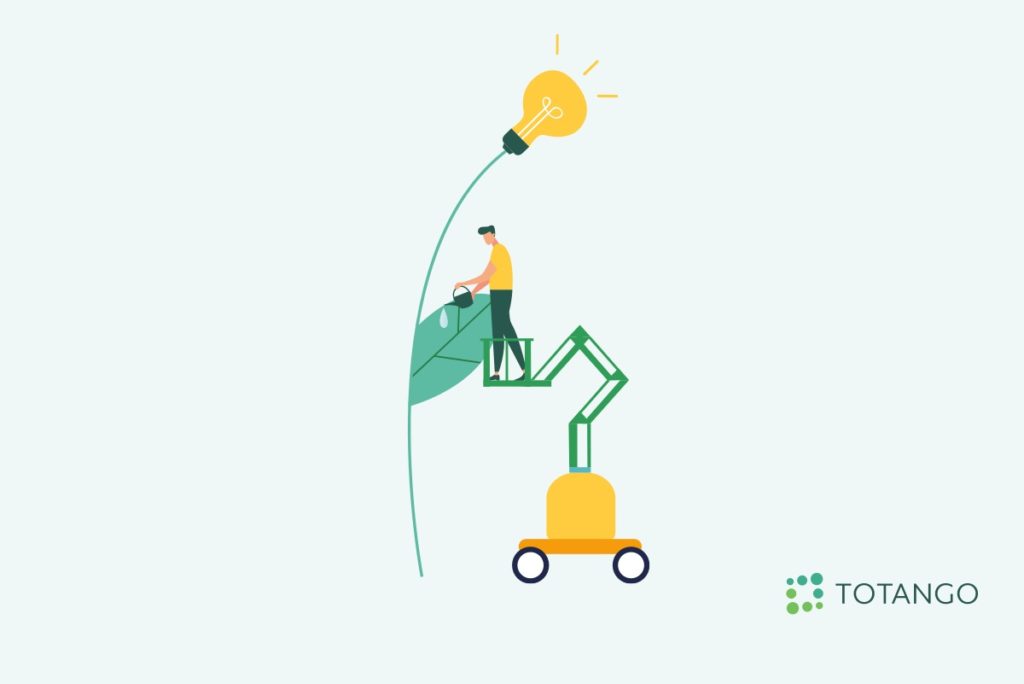Proactive customer success means focusing on what is going to happen next. It is about making things better, taking things further, and using your understanding of your customers to prepare them for the next phase of their business growth. It is a process of analyzing the past and monitoring the present in order to predict the future and foster customer lifetime value.
The flexible, fluid nature of the subscription economy places the customer in the driver’s seat, as they now have more choices than ever. If they are unsatisfied with your product or service, it’s easy to walk away. That’s why enterprises need to prioritize customer satisfaction throughout every step of their journey. By being proactive, you can anticipate what is going to happen next and deliver value that the customer may not even realize they need.
Look Toward the Future
It is important to focus on the future because that’s where the bulk of lifetime customer value lies, for both you and your customer. The dominant subscription model spreads recurring revenue out over years of renewal rather than concentrating it on a single sales event. For the customer, the goal is to use the product to promote sustainable, scalable growth over time rather than finding short-term solutions.
Therefore, the customer relationship is centered around sustainable, mutual growth, like that of a farmer tending to the ongoing cycles of a harvest. You need to nurture your customers so that both of you enjoy a recurring yield.
Proactive customer success keeps you focused on continually improving the customer experience so that they gain value throughout their journey. Done correctly, this process will increase retention and reduce churn.
Developing Proactive Customer Success Strategies
Renewal and churn are products of the entire customer experience. Decisions regarding both are often made well before an anniversary date rolls around and are closely connected to the customer experience. You can improve this experience by:
- Identifying issues before they cause frustration or escalations.
- Provide the right level of engagement at the right time.
- Making customers feel valued and heard.
- Anticipating future needs to produce additional value.
All these actions are dependent on a comprehensive understanding of our customer. That understanding comes from obsessively collecting customer information, sharing it across teams, and taking targeted action in response.
Leveraging Customer Data
The goal of closely monitoring customers and gathering data from every touchpoint is to generate proactive engagements. If all your data is being pulled into the same place, you can use it to create specific goals and KPIs for each stage of the customer journey:
- Track customer progress through onboarding and accelerate time to value by anticipating bottlenecks and sticking to implementation timelines.
- Monitor metrics that reveal a customer’s use of key product features during adoption.
- Establish goals for effective resolutions during customer escalations.
- Analyze all renewals to ensure they are handled on time, and create an action plan for any at risk.
By providing context to customer information, you can create proactive, targeted campaigns that personalize the customer experience and improve customer loyalty. And remember, the goal is to always continue improving. So, information gathered during the onboarding phase for one customer can be used to optimize the experience for future customers.
Targeted Campaigns
By closely monitoring a range of customer data, you can identify which customers may be at risk for churn, which might need expansion, and more. With an early warning system in place, you can take action before customers become frustrated and leave.
For example, if a customer completes their onboarding orientation inside the anticipated time frame, you can congratulate them and encourage them to try advanced product features. Explain how these features relate directly to their business goals and offer additional training or advice on how to incorporate them into their daily workflows.
Alternatively, you might automate a campaign that is targeted for customers a few months into adoption asking them to provide feedback about their experience. Their feedback could lead to an important feature update, which benefits another campaign geared towards low usage customers. Using campaigns, you could quickly disperse targeted messages showcasing your product improvements.
Detailed customer information allows you to cater your responses to each customer, thereby demonstrating your commitment to their success.
Taking Proactive Action with Customer Success Software
Timing is integral to the success of proactive engagements. If you miss a sign a customer is struggling, it might be too late by the time you realize what went wrong.
Get ahead of the customer experience by building a series of standardized processes into your customer success software. With this type of software, you can use a modular approach which allows you to set goals, establish tracking, and based on the data create necessary warning alerts when a client is at risk. Customer health scores provide an at-a-glance picture of a customer’s status so you can prioritize engagements.
Key metrics can be linked to automated alerts that will trigger direct reports the moment a customer approaches or exceeds positive and negative thresholds. So, if product usage dips dangerously low, the appropriate team member will be notified and is already equipped to handle the situation. And customer success software gathers vast amounts of customer data and insights into one convenient location and makes it easy to share across internal teams. By making customer information available across teams, you empower employees to engage with the customer with personalized, proactive messaging.
You want to make the most of every opportunity to demonstrate that you are thinking about your customers’ future success. It is the best strategy to craft a long-term, mutually beneficial relationship.
Totango provides a comprehensive, actionable customer success platform that helps you anticipate the needs of your customers. Request a demo to see how our product makes it easy to take proactive action and exceed customer expectations. If you’re ready to impress your customers, explore Spark today.

